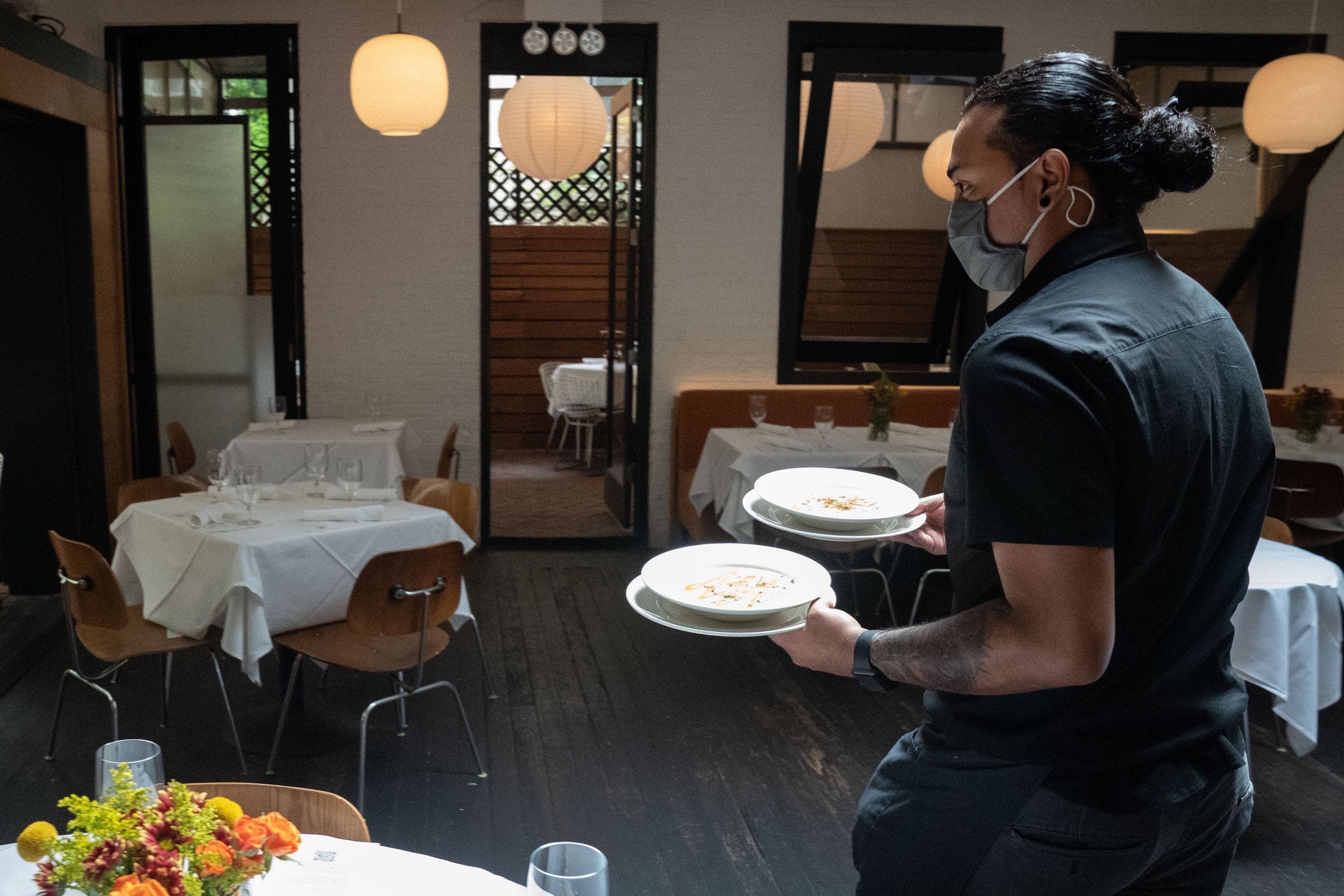
BRYAN R. SMITH/AFP via Getty Images
- Spending levels at 40,000 restaurants nationwide dropped significantly last year because of the coronavirus pandemic.
- Restaurants in some states, including Wyoming and Wisconsin, had spending levels similar to those before the pandemic.
- Restaurant operators were spending more on carryout boxes and bags as the demand for takeout and delivery increased during COVID-19.
- Visit Business Insider’s homepage for more stories.
Restaurants nationwide spent significantly less on food and other supplies last year as the coronavirus pandemic forced many eateries to temporarily shut down and host fewer in-store customers, new data shows.
Around 40,000 restaurants nationwide spent 24.5% less on food and other items per quarter in 2020 than than they did prior to the pandemic, according to a report by Buyers Edge Platform, a digital procurement network for foodservice that tracked and analyzed restaurant purchases.
Restaurants spent $2,700 each week purchasing food and products from their suppliers during the start of the pandemic last spring, down from $5,220 per week in the months prior.
Spending on food and supplies was at its lowest level during the week ending March 22, falling 67.5%, as stay-home orders were enacted and restaurants temporarily closed to in-person dining, leading to mass layoffs. By the end of 2020, there had been a rebound, with restaurants spending $4,531 per week on food orders and other items.
Spending levels had dropped to around 30% by the start of 2021, as COVID-19 cases surged across the country.
"The real challenge for operators was the uncertainty of managing labor and operating expenses," said John Davie, CEO of Buyers Edge Platform in the report.
Read More: 85% of independent restaurants may go out of business by the end of 2020, according to the Independent Restaurant Coalition
The report also analyzed the purchasing habits of 5,000 restaurants in ten states experiencing the highest drops in spending levels, including independent restaurants and large chains.
Buyers Edge Platform said the steepest declines were in Nevada and Hawaii, two states whose economies heavily rely on hospitality. Average weekly food orders during the pandemic dropped 65.1% in Nevada and around 59% in Hawaii.
Order levels also fell in Washington by around 41%, Vermont by 40.1%, Connecticut by 35.8%, and Colorado by 33.8%, Arizona by 32.5%, Illinois by 31.8%, New Hampshire by around 31%, and Alaska by 30.3%.
Read More: New Trump rule could cost waiters more than $700 million in lost wages by allowing employers to take more of their tips to pay other workers
Restaurants' spending levels dropped due to the in-door dining restrictions and job losses across the foodservice industry during the pandemic, according to the digital procurement network. Chain restaurants combined have permanently closed more than 1,500 locations since the pandemic began.
Buyers Edge Platform said that the numbers slowly improved and orders were slightly exceeding pre-pandemic levels as dining restrictions loosened last year, but those levels dropped again as restrictions went back into place.
Read More: These 38 retailers and restaurant companies have filed for bankruptcy or liquidation in 2020
Restaurants in Wisconsin, Wyoming, and South Carolina ordered more food, however. The average weekly restaurant orders during the pandemic were 1.8% higher in Wisconsin, 4.2% in Wyoming, and 7% higher in South Carolina compared with pre-pandemic levels.
Restaurants were stranded with a stock of food in their refrigerators in March that they were unable to profit from as bills piled up, according to Davie. Some restaurants kept their staff on payroll for longer than they needed because owners found it difficult to navigate the Payroll Protection Program, part of a federal relief package for business owners.
Restaurant operators also changed their buying habits as they focused on obtaining certain products during the pandemic. Orders for frozen dessert products increased 145%, but orders for hotel products fell 69% and slumped 57% for fresh fish and frozen crab meat orders. Pen orders also declined by 67% as in-person dining that involved in-person check-signing decreased.
Read More: 12 restaurant chains have filed for bankruptcy in 2020 in the wake of the pandemic
The demand for carryout boxes and bags increased during the pandemic, according to the analysis, as consumers were heavily relying on takeout and food delivery.
During the period between February and December of 2020, Restaurants' orders of disposable bags soared 115%, while orders for disposable boxes increased 114% and disposable lid orders spiked 96%.
Additionally, orders for health and food safety products increased by 81% during the same period.
In December, a new rule was rolled out that allows restaurants to pull tips from their waitstaff to pay cooks and other employees. The 148-page regulation published by the Department of Labor is expanding on employers' ability to pool tips and share them among employees who usually receive them.